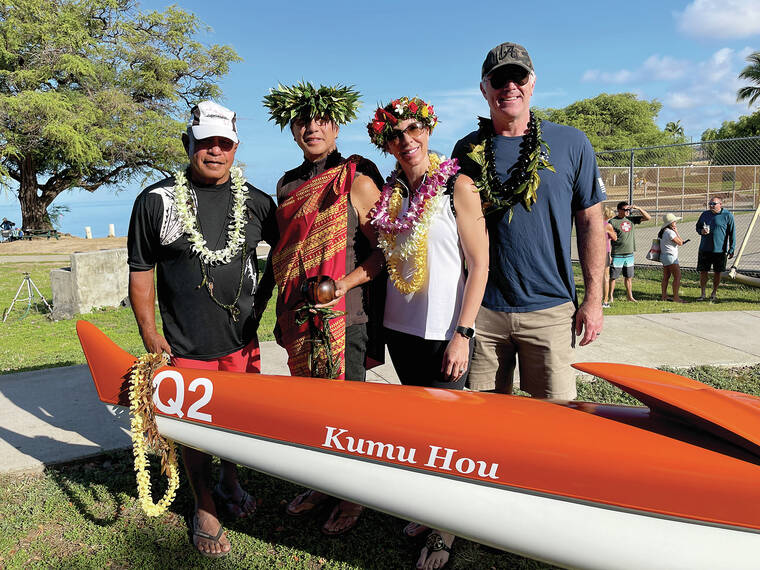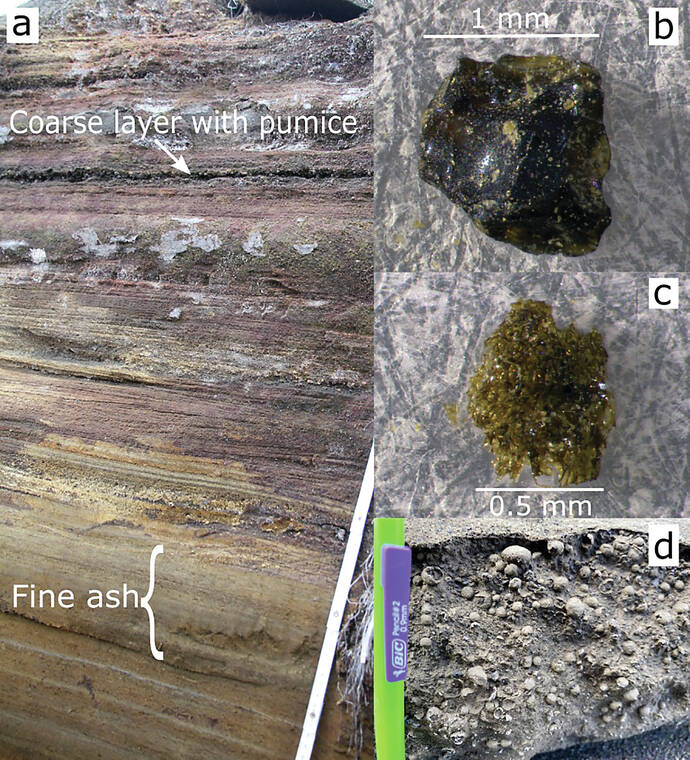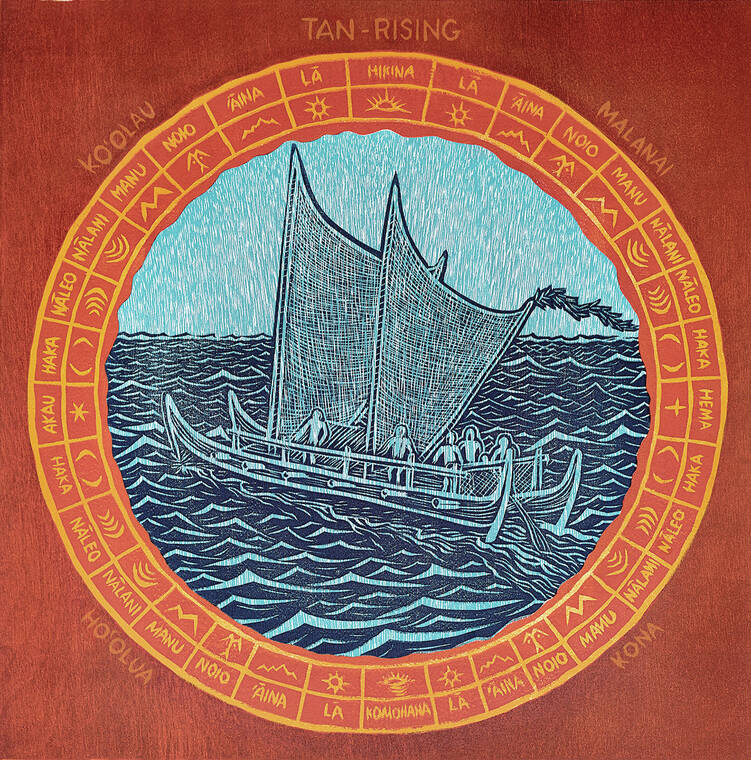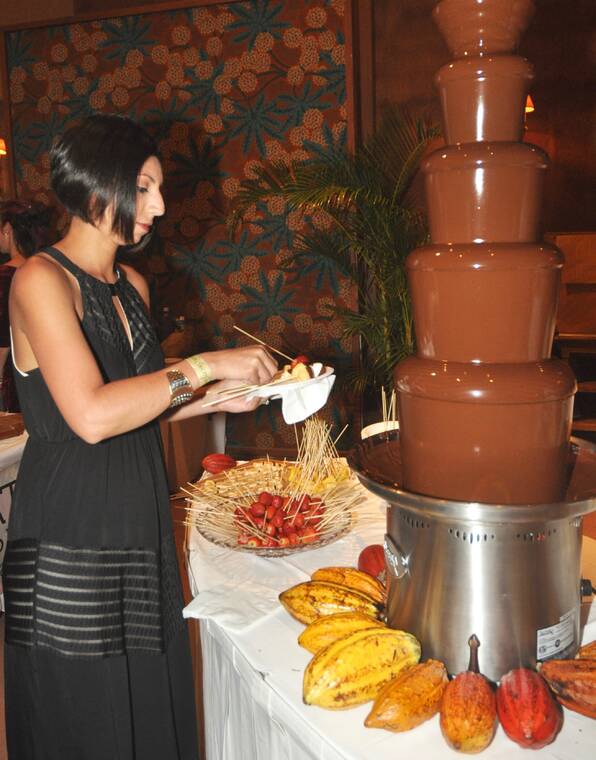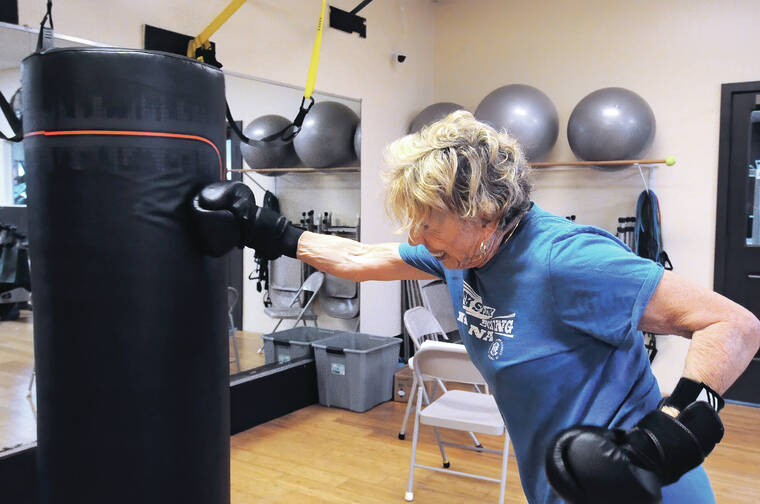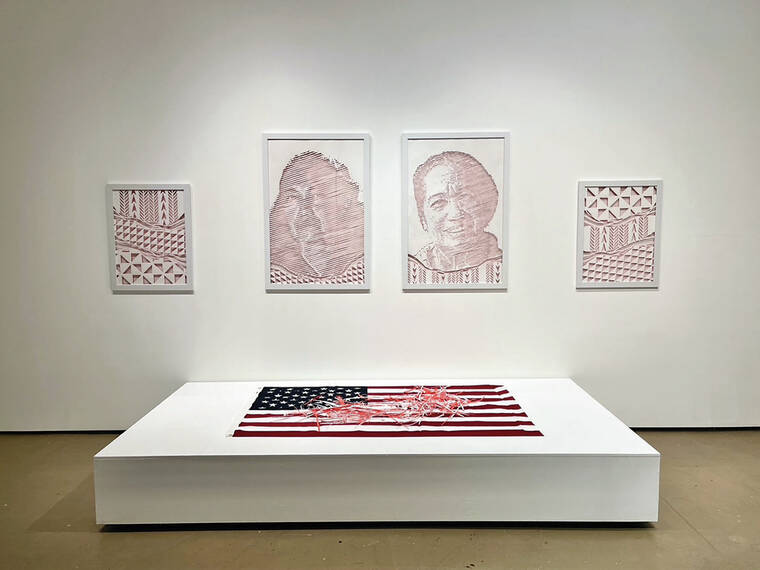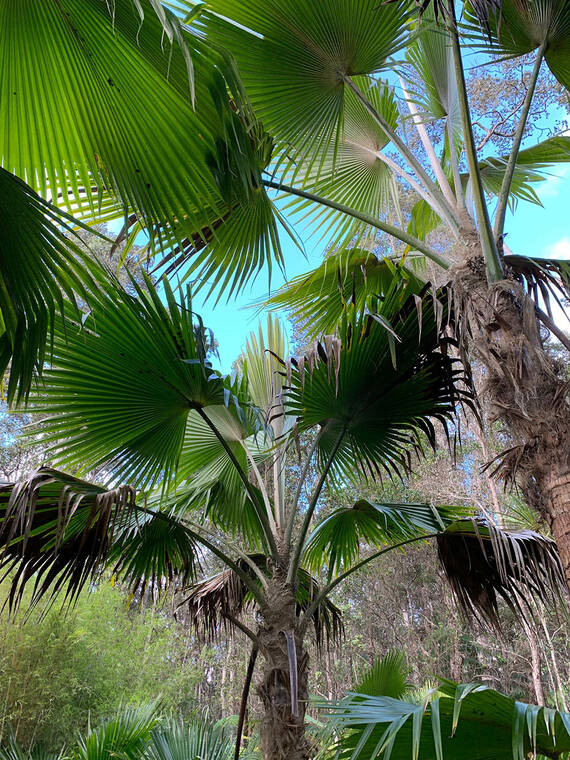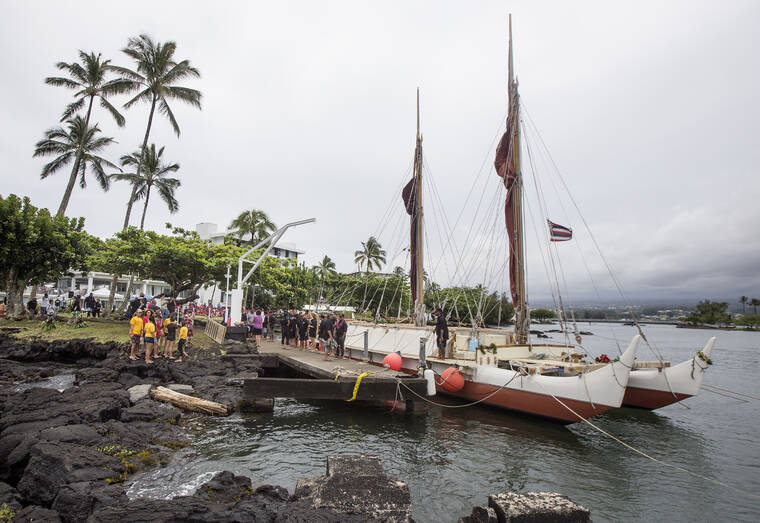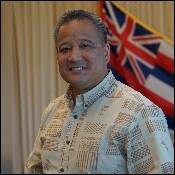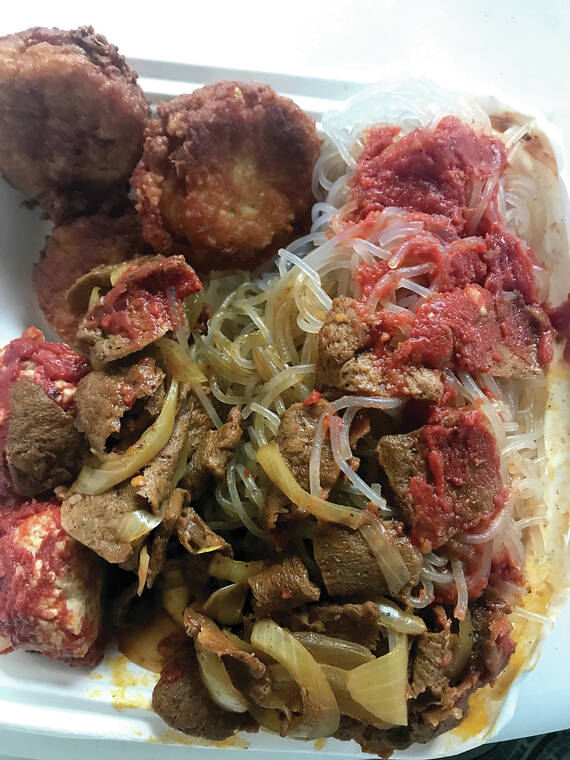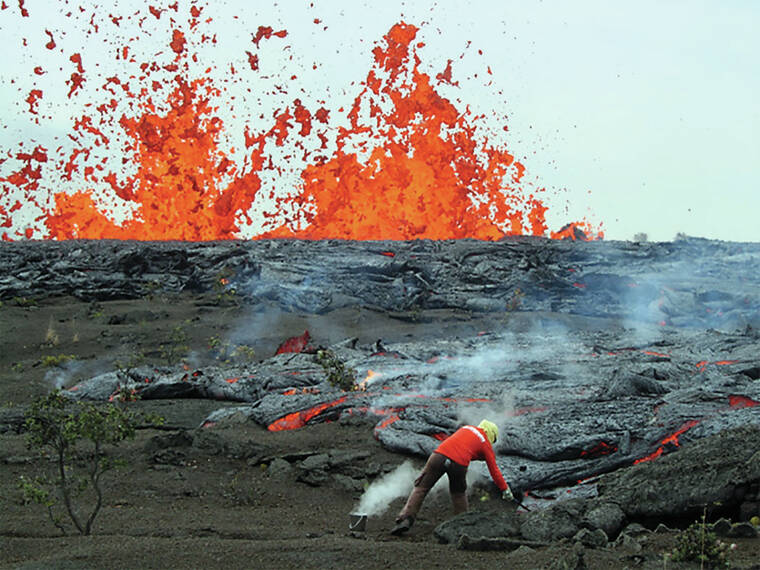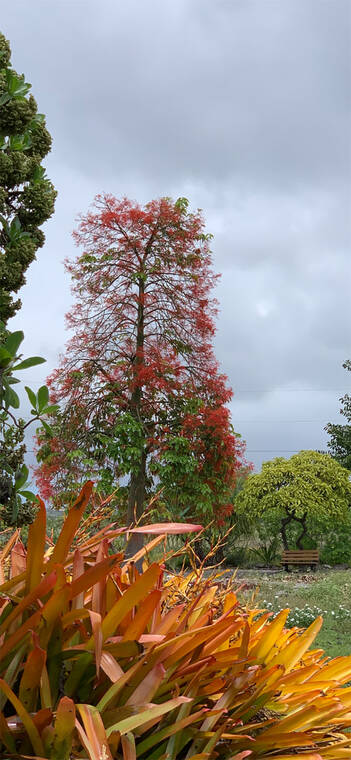Waikoloa Foundation gifts new canoe to Hoemana
Members of Hoemana and The Waikoloa Foundation gathered Saturday at Spencer Beach Park for a blessing of their newest outrigger canoe, gifted by The Foundation in support of the club’s mission to strengthen the community through outrigger canoe paddling.
Let’s Talk Food: Easter Sunday
This Sunday is Easter Sunday and a Christian festival, often called Pascha or Resurrection Sunday, and celebrates the resurrection of Jesus from the dead.
Volcano Watch: How tephra deposits unlock the secrets of Kilauea volcano’s explosive past
I think the Island of Hawaii is one of the most magical places on Earth. You can literally see land in the making when one of the volcanoes is erupting. But the familiar sight of red-glowing lava flows makes it hard to imagine a time when eruptions were different, and to think that such a time may come again someday.
Tropical Gardening: Palm Sunday marks the beginning of the Christian Holy Week
Palms are a key component of Hawaiian gardens, and it was date palm (Phoenix dactylifera) leaves used to greet Jesus as he entered Jerusalem the Sunday before Easter. Date palms are not often used in the typical garden because nurseries seldom carry them. On the other hand, the pygmy date palm is much more delicate, smaller and popular. Pygmy date palms (Phoenix roebellini) fit well in limited spaces and are slow growing, so consider them in that they are drought and wind tolerant. They will tolerate full sun and shady locations as well. However, the date palm of the Middle East and other dry regions of the tropics or subtropics should not be ignored. It is extremely tolerant of dry, windy and salty locations where most other palms would not survive. They can be grown from seed if you have the patience. At Spencer Park in South Kohala, there are fruiting specimens that actually produce edible dates. Collecting seeds there is an option for a fun project.
AAUW offers scholarships for UH-Hilo, HCC female students
The Hilo Branch of the American Association of University Women is pleased to announce that it will once again offer scholarships to female students at UH-Hilo and Hawaii Community College.
‘Reflections’ exhibit opens Saturday at VAC
Volcano Art Center is proud to announce the exhibition ‘Reflections’ by Gary Eoff. The exhibit, which features prints, cultural reproductions and kapa, will open at the Volcano Art Center Gallery in Hawaii Volcanoes National Park on Saturday and will continue through May 15.
Big Island Chocolate Festival regroups, sets date of May 13-14
KOHALA COAST — After a two-year hiatus due to COVID-19, the ever-popular Big Island Chocolate Festival is presenting a “reimagined edition” May 13-14 at the Waikoloa Beach Marriott Resort &Spa.
Let’s Talk Food: Baking soda, an essential ingredient
Baking soda is sodium hydrogen carbonate or bicarbonate of soda. Its chemical formula is NaHCO3. If you taste it, you will know it is a salt with some alkaline flavors.
Big Island Press Club scholarships available
The Big Island Press Club announces the availability of scholarships of up to $1,500 for students pursuing higher education in journalism and related careers.
Show no mercy: Rock Steady Boxing helps people battling Parkinson’s
It was a morning of music and dance at Pacific Island Fitness as Rock Steady Boxing, a unique exercise class for individuals who have been diagnosed with Parkinson’s disease, got to work.
Hawaii District Science & Engineering Fair announces 2022 award winners
Research on novel cancer treatment, motor design, microbial control, and pharmaceutical aids swept the competition at this year’s Hawaii District Science and Engineering Fair. This year’s fair, held in February, was hosted by the University of Hawaii at Hilo.
UH-Hilo College of Hawaiian Language announces Dean’s List for Fall 2021
The University of Hawaii at Hilo Ka Haka ‘Ula o Ke’elikolani College of Hawaiian Language announces its Dean’s List for Fall Semester 2021.
EHCC exhibition explores tension between modern and traditional
Difficult questions are at the core of the Kilo I Ka Mo‘o exhibition on view in April and May at the East Hawaii Cultural Center. How can Native Hawaiians reconcile the contradictions between the traditions of their subjugated culture and the contemporary ideals of a monetized society? Is it possible to express one’s native heritage, reclaim lost identity, and at the same time accept new ways?
Volcano Watch: The 2018 eruption of Kilauea was big on a global scale
The 2018 eruption of Kilauea volcano had devastating effects on the lower Puna district, destroying hundreds of homes, burying subdivisions, and permanently affecting the lives of thousands of residents. The voluminous lava flow had a major impact on the Island of Hawaii, but how does it compare to other lava flow eruptions on Earth in recent history?
Tropical Gardening: What would Hawaii be without palms?
Hawaii is famous throughout the world for its beauty, friendly people and for the varied climate that is ideal for almost all the palms on the planet. This Oct. 10-19, the International Palm Society is celebrating its 32nd biennial meeting here. Every two years, members from all over the world meet to learn about this amazing family of plants. They meet in such exotic places as Thailand, Brazil, Madagascar and New Caledonia. This year they will focus on the rare endemic genus Pritchardia. To get involved in this year’s events, go to the IPS website, palms.org for details.
Polynesian canoes set for ‘Kealaikahiki Voyage’
The volyaging canoes Hokule‘a and Hikianalia’s will travel to Hilo from Oahu next week before setting sail for French Polynesia. They could head to Hilo as early as Monday.
Ige names BOE appointees
Gov. David Ige reappointed two members and appointed three new members to the state Board of Education. The appointments are subject to approval by the Senate.
Volcano Watch: Remembering the 2011 Kamoamoa eruption
The 35-year-long Pu‘u‘o‘o eruption on the middle East Rift Zone of Kilauea was a remarkable opportunity for scientists to improve volcano research and monitoring. Even short-lived episodes in this eruption, like the four-day-long Kamoamoa eruption, offered important insights. For the 11th anniversary of the Kamoamoa eruption, this week’s “Volcano Watch” highlights the episode and some of the data collection.
One more new pest now attacking our forests and gardens: the acacia whitefly
It seems just when we think we have dealt with one epidemic another pops up. The avocado lacebug caused widespread defoliation of avocado trees in 2021, and now we have a new pest attacking our native koa, wili wili and uhiuhi. The acacia whitefly (Tetraleuodes acacaciae) has become widespread on Oahu and will soon be found on the Island of Hawaii if it is not already here. Not only does it attack our native acacia koa, other hosts include the shower tree (Cassia species) and related legume trees like the bauhinias are vulnerable as well. Acacia whitefly infestations may cause leaf yellowing, wilting and even defoliation.

